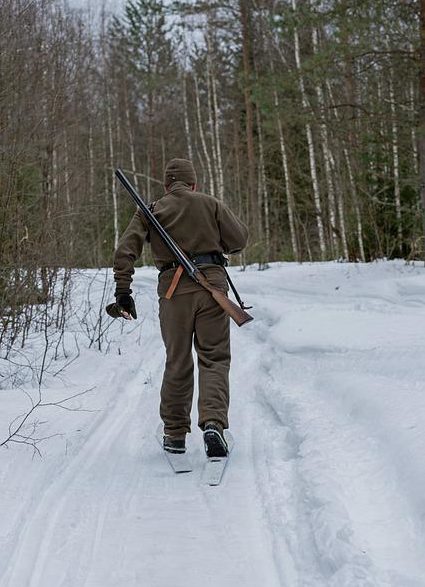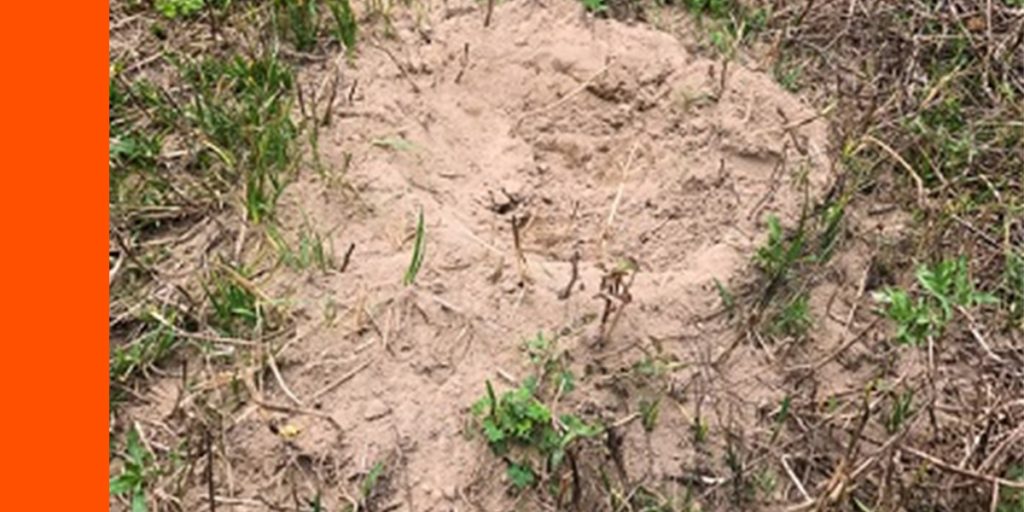– By Colt Bison Russell, US Army Vet
Three years…
That’s how long I had been watching this buck on my trail camera.
In 2019, he was an 11pt.
Years and points…
Then, in 2020, from what I could tell, he appeared to be a big 14 point. However, a couple of weeks before bow season began, he made an appearance. And then, just like that, he vanished.

Getting to see this buck in the wild was a dream… Getting to harvest him was a dream come true!
He showed up again the final two days of our rifle season that year, but then disappeared once again.
As each year passed, he continued to have the same distinguishing characteristics; tall brows and tines that nearly touched. He also had split main beams.
Each year, he seemed to add a little more to what was already an impressive rack.
-
 N1 Outdoors® Sunrise In Tineville™ Tee$18.99
N1 Outdoors® Sunrise In Tineville™ Tee$18.99 -
Product on sale
 N1 Outdoors® Whitetail Sugar Skull Tee (Black/Columbia Blue)$19.00
N1 Outdoors® Whitetail Sugar Skull Tee (Black/Columbia Blue)$19.00 -
 N1 Outdoors® Tine Lines™ Whitetail Deer Antler TeePrice range: $26.99 through $29.99
N1 Outdoors® Tine Lines™ Whitetail Deer Antler TeePrice range: $26.99 through $29.99
When considering what he had done the prior two years, I just figured I would never see him again.
The Video That Changed Everything
But, then, in 2021, on the 6th of September, I got one brief trail cam video of this buck in velvet.
One thing was for sure… this buck was an absolute stud, especially for Essex County, New York! You just don’t see bucks of this caliber around these parts.
The Hunt For “Houdini”
I had hunted the same area the night before with no luck.
On September 30th, I really didn’t plant on hunting the same area again. However, I decided at the last minute that I would because two nice 8-pointers (both on my hit list) showed up on the trail cam.

I had nicknamed this buck Houdini, because he always seemed to disappear. But he showed up for one final act.
It wasn’t very long that I’d been in the woods when a mature doe approached, but I couldn’t get a clear shot on her.
So, I continued to check more of my trail cameras and still hunt.
It was 6 PM and I was roughly 1.5 miles deep on my hunting lease when I decided I was going to head back to the house for dinner.
I was looking for deer the whole walk back, but when I was about 250 yards from reaching my truck, I noticed the big body of a deer in the wood line about 60 yards away.

What if I hadn’t stopped to check the trail camera? What if I had shot that doe? What if I hadn’t been so hungry that I decided to go home? I’m glad those all happened!
I instantly nocked an arrow onto my Mathews Solocam bow and continued moving down the trail. When I got about 10 yards into the woods, I drew my bow back.
I could tell that this deer was a buck, but the light was dimmer under the canopy of trees and it made it difficult to see the rack. I thought this deer was probably one of my two 8-point hit-listers that I was after.
I really didn’t have time to get nervous, because from the time I drew back until I released the arrow was only about 8 seconds. It all happened so fast!
-

N1 Outdoors® N-Tune™ Nock Tuning Fluorescent Arrow Tracers (24-pack)
Price range: $18.99 through $27.99 Select options This product has multiple variants. The options may be chosen on the product page -

N1 Outdoors® N-Tune™ Nock Tuning Reflective Arrow Wraps – Tiger Stripes
Price range: $18.99 through $27.99 Select options This product has multiple variants. The options may be chosen on the product page -

N1 Outdoors® N-Tune™ Nock Tuning Transparent Arrow Wraps (Non-Reflective)
Price range: $16.99 through $25.99 Select options This product has multiple variants. The options may be chosen on the product page
The Shot
I was at about 50 yards when I let the arrow fly.
The arrow hit a little high and he dropped. When he did, I could see his rack and instantly realized what buck it was.
That’s when things got hectic. The panic was setting in!
I ran over to put another arrow in him to finish him.

“Houdini” grossed 205 4/8 inches Boone and Crockett and netted 196 inches (non-typical). It was the highest scoring buck ever in Essex County and was the largest buck harvested in the state of New York and all the Northeast in 2021.
I was in disbelief. The giant buck I had been seeing for 3 years was finally down!
His rack was covered in grass as if he had just racked the ground to shreds.
I picked up his head and just took a minute to soak it all in.
I counted 20 points on his rack. All I could think was, “who is even going to believe me when I tell them that I just shot a 20-point buck with my bow?”
I started making phone calls. And, just like I thought, it took some convincing for my close friends and family members to believe me and understand that I needed help getting this buck to the truck!

I figured that this monster of a buck had to have watched me 80 to 100 yards down that trail before I had even noticed he was there. I truly believe that deer was going to just let me walk right past him.
All The “What Ifs”
When my friends and family came, they were as in shock as I was because, again, you just don’t see deer like this one in these parts!
There are so many things that could have been different that would have kept me from tagging this buck.
What if I hadn’t stopped to check that trail cam?
What if I had taken a shot on that doe I had seen earlier in the evening?
It’s very possible that I would never have crossed paths with this giant.
Everything just fell in to place that day and I truly believe that someone was looking over my shoulder.
Word Gets Around
I was shocked how fast the word spread across the country about this buck. In just a matter of hours, the state knew about it and friends of mine across the county were contacting me, offering congratulations.
I count myself truly blessed to have gotten the chance to harvest a true Adirondack giant!








































